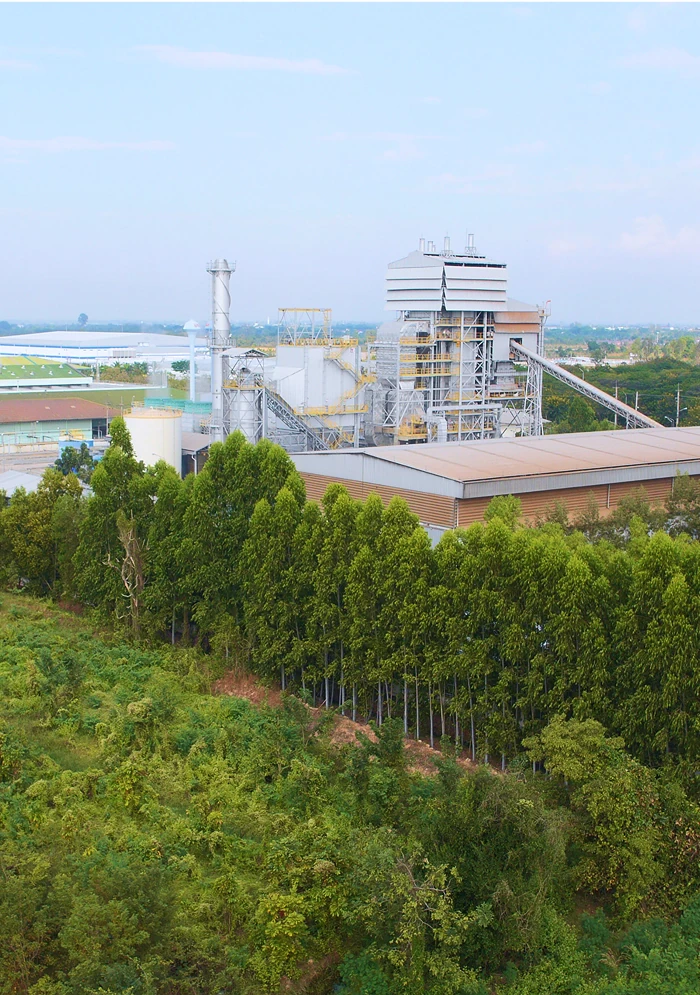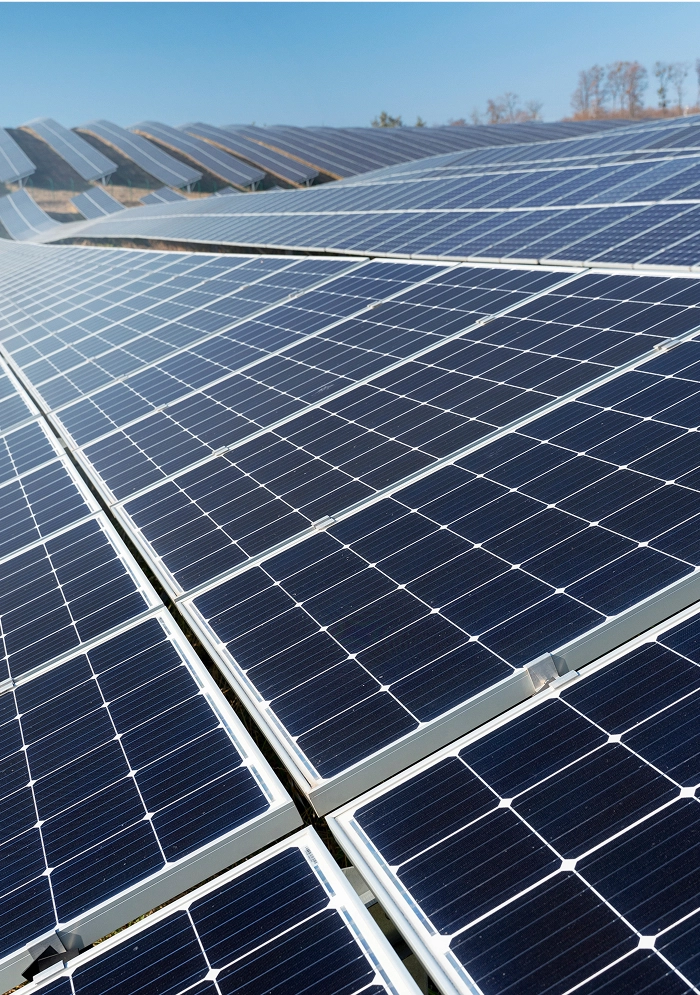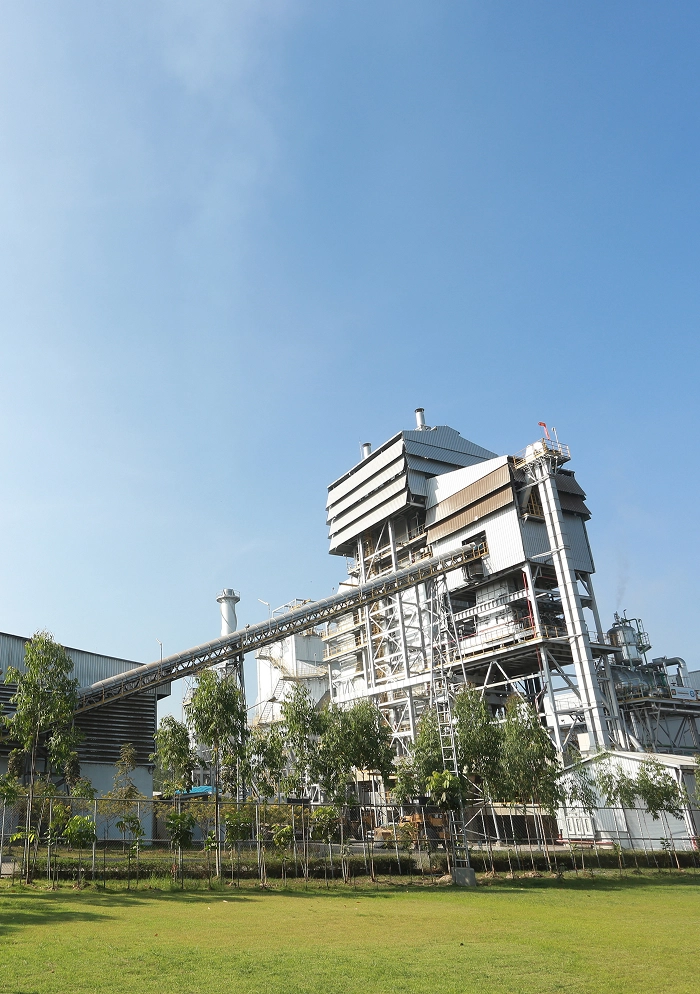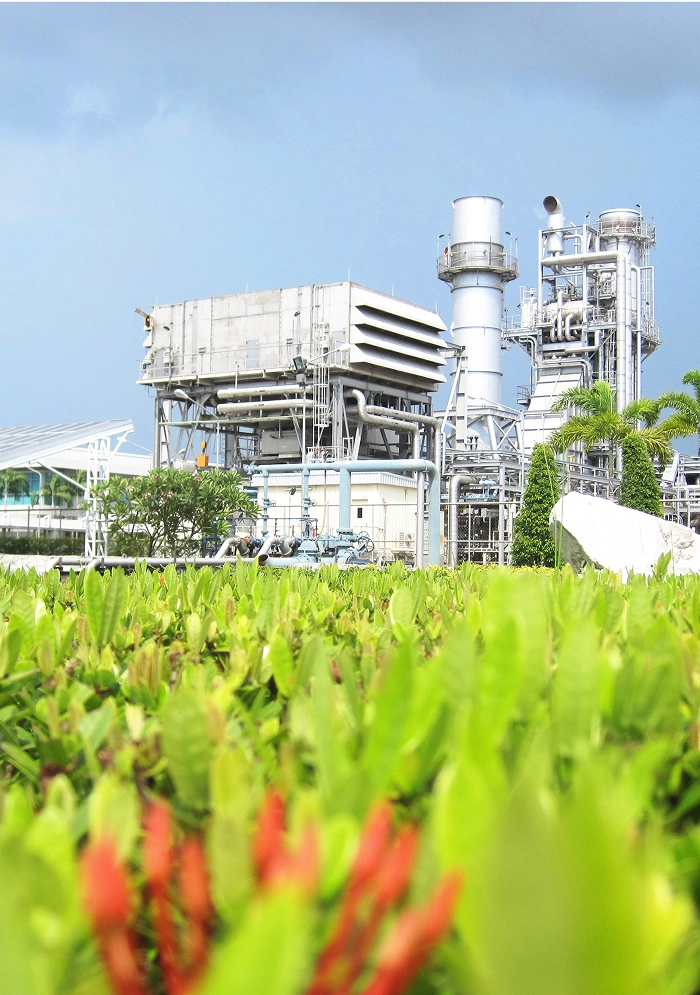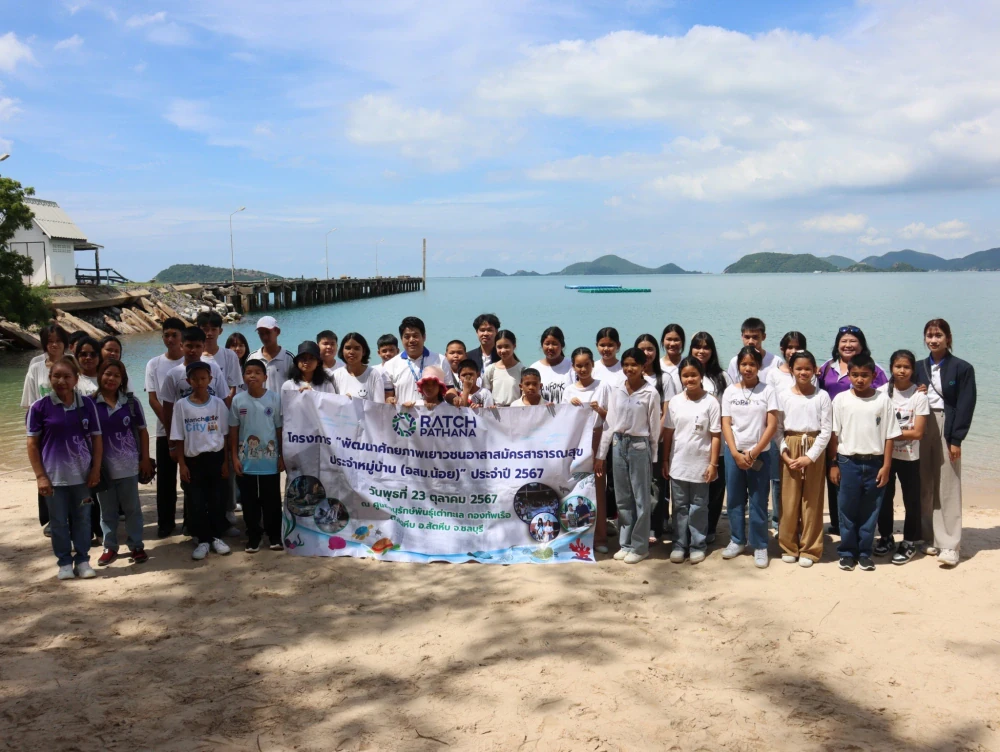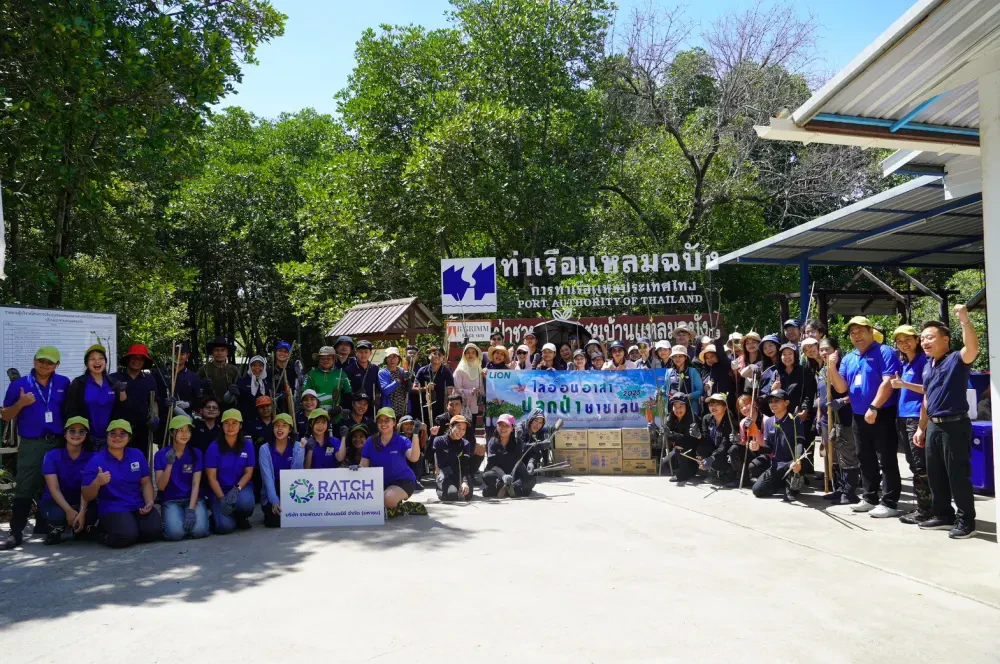Water Management

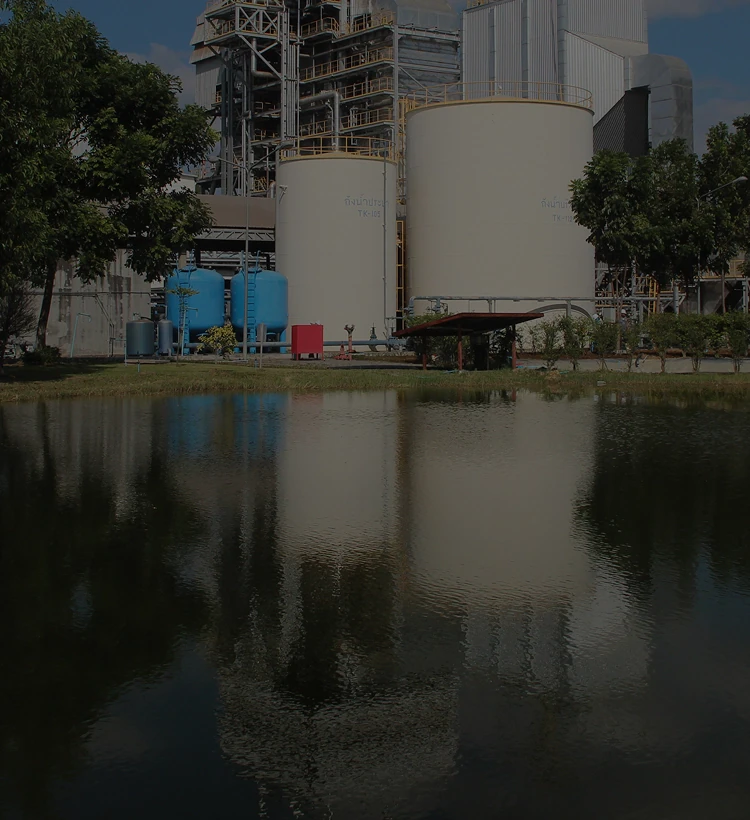
Supporting the SDGs Goals
Goal 6:
Goal 14:
Goal and Performance Highlights
Ratch Pathana Energy Power Plant
Goal
Reduce process water consumption by reusing at least 40,000 m3 of treated wastewater (3% of total water usage).
Performance
48,350.20 m3 of wastewater was reused, Achieving
Goal
Reduce office water consumption by at least 2,593.8 m3 (40% of total office water use).
Performance
2,996.17 m3 of office water was saved, Achieving
Sahacogen Green Power Plant
Goal
Reduce process water consumption by reusing at least 45,000 m3 (9.74% of total water usage).
Performance
53,432 m3 of wastewater was reused, Achieving
Goal
Reduce office water consumption by 346 m3 (4% from the 2023 baseline).
Performance
1,105 m3 of office water was saved, Achieving
Sahagreen Forest Power Plant
Goal
Reduce process water consumption by reusing at least 20,000 m3 annually (5.13% of total water usage).
Performance
15,507 m3 of wastewater was reused, Achieving
Goal
Reduce office water consumption by 1,000 m3 (45.64% from the 2023 baseline).
Performance
1,637 m3 of office water was saved, Achieving
Water Consumption Statistics
| 2022 | 2023 | 2024 | |
|---|---|---|---|
| Ratch Pathana Energy Power Plant | |||
| Water Consumption (m3) | 1,824,400 | 1,908,007 | 1,698,676 |
| Water Intensity (Withdrawal/MWh net) | 1.74 | 1.98 | 2.40 |
| Treated Wastewater (%) | 100 | 100 | 100 |
| Water Management Approach | Industrial Park Treatment System / Green Area / RO Rejected Water Recycle | ||
| Sahacogen Green Power Plant | |||
| Water Consumption (m3) | 311,616.00 | 57,221.00 | 355,857.01 |
| Water Intensity (Withdrawal/MWh net) | 4.96 | 5.36 | 5.34 |
| Treated Wastewater (%) | 100 | 100 | 100 |
| Water Management Approach | Industrial Park Treatment System / Green Area | ||
| Sahagreen Forest Power Plant | |||
| Water Consumption (m3) | 400,671.00 | 448,220.00 | 391,445.67 |
| Water Intensity (Withdrawal/MWh net) | 7.12 | 7.93 | 4.68 |
| Treated Wastewater (%) | - | - | - |
| Water Management Approach | Zero Discharge Policy | ||
Challenges and Opportunities
Ratch Pathana and Affiliates has adopted a comprehensive approach to sustainable water management, focusing on water resource allocation, risk mitigation related to water scarcity, and continuous improvement in water use efficiency within operational processes. The Group recognizes that this area presents both challenges and business opportunities, as outlined below
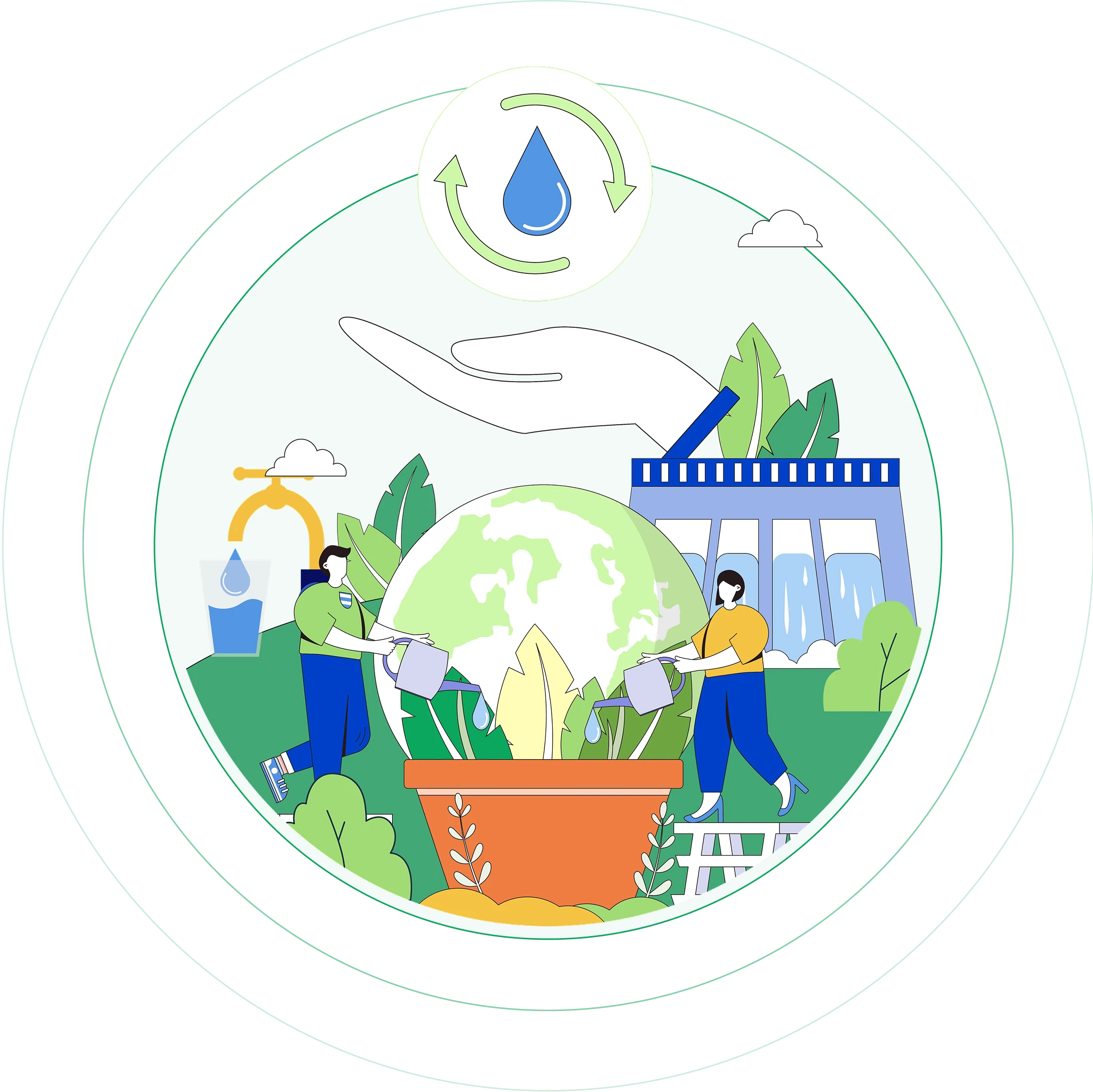
| 1. Water Scarcity Risks Although water is allocated from designated sources and reserve storage is in place, certain power plants—such as Ratch pathana Energy Power Plant, which relies on water sources spanning multiple provinces—remain at risk during periods of drought or flooding. These extreme weather events may disrupt access to key water sources, necessitating proactive contingency planning. |
1. Technological Advancement and Innovation The development of projects like RO Rejected Water Recycle and large-scale water reservoirs reflects the Company’s commitment to water innovation. These initiatives can position the Company to lead in water technology and potentially offer water treatment services to other industries in the future. |
| 2. Compliance with Regulations and Standards The Company must consistently comply with legal requirements related to water discharge quality, such as maintaining cooling water discharge temperatures below 40°C. This demands regular monitoring, upgrades, and ongoing improvements in water management systems to prevent environmental harm. |
2. Cost Reduction Implementing water recycling technologies within production processes helps reduce dependency on public raw water sources. This, in turn, lowers costs related to raw water intake and wastewater treatment, contributing to overall operational efficiency. |
| 3. Capital Investment Costs Investing in advanced water treatment systems, such as the RO Rejected Water Recycle system, and the construction of large-scale water reservoirs involves high upfront costs. Effective budget planning and forecasting of long-term returns on investment remain critical challenges. |
3. Partnerships with Government Agencies and Communities Collaborations with government entities—such as the Royal Irrigation Department and the Ministry of Natural Resources and Environment—as well as securing water supply agreements, create opportunities for long-term partnerships. These alliances enhance business stability and support future expansion strategies. |
Management Approach and Value Creation
Sustainable Water Management Plan
Ratch Pathana and Affiliates is deeply committed to the efficient and sustainable management of water resources across all operational processes. From water sourcing and utilization in production to post-process environmental stewardship, every step is carried out in strict compliance with applicable laws and regulations. The Group places strong emphasis on minimizing the impact of water usage on surrounding communities, while proactively addressing potential risks related to water scarcity that may affect the continuity of power plant operations.
As part of our long-term sustainability strategy, Ratch Pathana and Affiliates has successfully implemented comprehensive water management plans across 100% of its operational sites, including both existing and newly developed facilities. This full coverage reflects our unwavering commitment to sustainable water practices and aligns with our broader ESG objectives. We continue to uphold this standard to ensure long-term water security and responsible resource stewardship for future generations. Each subsidiary within the Group has adopted tailored water management approaches, including but not limited to the following practices:
Ratch Pathana Energy and Sahacogen Green Biomass Power Plants
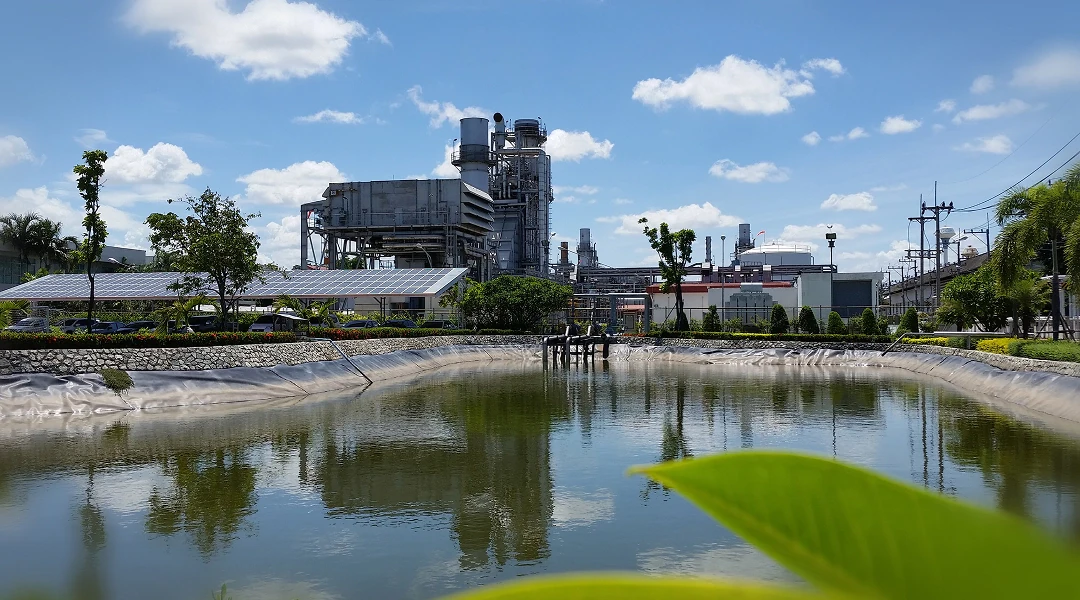
Ratch Pathana Energy and Sahacogen Green Biomass Power Plants are located within the Saha Industrial Park, utilizing water from designated industrial water sources that provide sufficient reserves for production, without affecting local community water supply. Process Water Treatment and Reuse: Neutralization Basin: Water from production processes undergoes quality adjustments before being transferred to the wastewater treatment system of the Saha Industrial Park. Water Reuse Initiatives: Treated water is repurposed for landscaping irrigation, with excess water discharged into external water bodies in full compliance with legal discharge standards. Cooling System Compliance: Water discharged from cooling systems is regulated to not exceed 40°C, in accordance with legal temperature limits for environmental protection.
Sahagreen Forest Biomass Power Plant

Key Features of the Water Management System: Sediment Separation & Main Reservoir: Designed to maintain water quality, reduce the need for chemical treatment, and minimize wastewater discharge. Green Belt Initiative: Windbreak trees have been planted around the reservoir to reduce water evaporation and facilitate water reuse in power generation. Zero Discharge Approach: All treated water is retained and reused for landscaping irrigation, with no wastewater discharge into external water bodies.
To ensure compliance and minimize environmental impact, the plant strictly monitors water quality and cooling water temperatures as per legal requirements. Additionally, regular ecological assessments are conducted to safeguard the local aquatic ecosystem.
In alignment with the Company’s commitment to sustainable business practices, the following goals have been established as part of its water resource management :
-
Reducing Dependence on Natural Water Sources
The Company promotes efficient water usage and explores alternative sources such as recycled water, reclaimed water, and other environmentally responsible options that minimize ecological impact.
-
Promoting Water Conservation Across All Operations
Through continuous improvement of technologies and production processes to reduce water consumption, the Company also fosters a culture of water stewardship among employees and stakeholders.
-
Collaborating with Communities and Government Agencies for Sustainable Water Management
The Company engages in partnerships to build shared understanding and support local water conservation initiatives in areas surrounding its operations.
-
Monitoring and Evaluating Water Usage on an Ongoing Basis
To ensure that operations do not adversely affect natural water sources, the Company regularly assesses its water management practices and adapts them to evolving environmental and operational contexts.
Water Risk Management
Water Management Risk Assessment
The company is committed to responsible water usage and conducts annual assessments of water-related risks in the areas where its business units are located. These assessments utilize the Aqueduct Water Risk Atlas, developed by the World Resources Institute, to identify water-stressed areas and inform strategic planning for water management within production processes.
In addition, the company has developed a comprehensive water data management system to monitor, analyze, and understand water usage across all operational stages. This system serves as a critical foundation for effective and efficient water resource management.
-
Water Management at Power Plants
- Ratch Pathana Energy Power Plant (Chonburi Province): Sources raw water from a regional water network covering three provinces: Chonburi, Rayong, and Chachoengsao.Secured a 10-year long-term water supply contract with backup reserves for emergency situations.
- Ratch Pathana Energy & Sahacogen Green Biomass Power Plants: Located within the Saha Industrial Park, utilizing dedicated industrial water sources that do not impact local community water supply.
- Sahagreen Forest Biomass Power Plant: Constructed a 40-rai water reservoir with a storage capacity of 370,000 cubic meters per year, ensuring year-round power generation.
-
Water Risk Assessment
- Water stress, flood risks, drought conditions, and water quality concerns.
- Short-term (annual) and long-term (project lifecycle) risk evaluations.
- Utilization of risk assessment results to develop and enhance preventive and mitigation plans.
- Annual risk reviews to refine strategies based on improved forecasting data.
-
Additional Measures for Efficient Water Management
- Installation of water treatment systems before water enters production processes.
- Increased water recirculation cycles in cooling systems to reduce raw water consumption.
- Reuse of treated RO wastewater for applications such as landscaping and green spaces.
- Regular inspections of water pipelines to prevent leaks and minimize water loss.
-
Optimization of Water Usage through the 3Rs Approach (Reduce-Reuse-Recycle)
- Reduce water usage in production by increasing recycling loops within cooling tower systems.
- Reuse treated wastewater as a substitute for raw water, reducing dependence on public water sources.
- Recycle and consistently monitor discharged water to ensure compliance with environmental standards and minimize community impact.
-
Collaborative Water Resource Management
- Engagement with government agencies, such as the Royal Irrigation Department and the Ministry of Natural Resources and Environment, along with local communities, to align water usage with availability.
- Monitoring water forecasts and watershed conditions to anticipate fluctuations in supply.
- Establishing agreements with water suppliers to secure emergency water reserves in case of shortages.
Wastewater Discharge and Quality (2022-2024)
| Parameter | 2022 | 2023 | 2024 |
|---|---|---|---|
| Ratch Pathana Energy Power Plant | |||
| Wastewater Discharge Volume (m3/year) | 536,531 | 670,593 | 239,143 |
| Water Quality | |||
| Temperature (°C) | 31.8 | 31.8 | 32.6 |
| pH Level | 7.7 | 7.6 | 7.6 |
| Biochemical Oxygen Demand (BOD) (mg/L) | 2.0 | 2.5 | 2.3 |
| Chemical Oxygen Demand (COD) (mg/L) | 50.1 | 48.9 | 40.3 |
| Total Dissolved Solids (mg/L) | 863.6 | 855.4 | 805.5 |
| Sahacogen Green Power Plant | |||
| Wastewater Discharge Volume (m3/year) | 54,760 | 48,627 | 60,000 |
| Water Quality | |||
| Temperature (°C) | 32 | 34 | 33 |
| pH Level | 8.7 | 8.7 | 8.8 |
| Biochemical Oxygen Demand (BOD) (mg/L) | 21.1 | 11.6 | 9.0 |
| Chemical Oxygen Demand (COD) (mg/L) | 161 | 80 | 97 |
| Total Dissolved Solids (mg/L) | < 3.0 | < 3.0 | < 3.0 |
| Sahagreen Forest Power Plant | |||
| Wastewater Discharge Volume (m3/year) | 78,419 | 58,740 | 51,082 |
| Water Quality | |||
| Temperature (°C) | 31 | 31 | 31 |
| pH Level | 7.5 | 7.9 | 8.0 |
| Biochemical Oxygen Demand (BOD) (mg/L) | 11.6 | 9.3 | 8.7 |
| Chemical Oxygen Demand (COD) (mg/L) | 118 | 87 | 75 |
| Total Dissolved Solids (mg/L) | < 3.0 | < 3.0 | < 3.0 |
Water Usage Incident Statistics
| Incident/Issue | Number of Cases (per year) | ||
|---|---|---|---|
| 2022 | 2023 | 2024 | |
| Conflicts with water users/stakeholders | 0 | 0 | 0 |
| Environmental violations/legal infractions | 0 | 0 | 0 |
